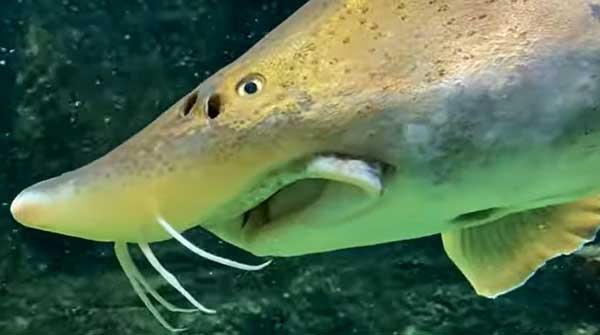Ancient sturgeon fossil unearthed in Edmonton’s North Saskatchewan River Valley a rare find from the Cretaceous period
A 72-million-year-old sturgeon fossil has been discovered in Edmonton’s North Saskatchewan River Valley, the first fish material of any kind found from that time period and in that geographical area.
A couple of hikers came across a sturgeon skull near a local city park last February, believing it might be a fragment of dinosaur skin. They took it to the University of Alberta’s star paleontologist, Phil Currie, who confirmed it was indeed part of an ancient fish.
Currie passed the fossil on to fish paleontologist Alison Murray, who identified it as a sturgeon – a North American temperate freshwater fish still in existence, a species of which lives in the North Saskatchewan River – estimated to be about two metres long when it was alive. Murray and her team named the new species Boreiosturion labyrinthicus.
The park lies on a geological structure known as the freshwater Horseshoe Canyon Formation, which took shape during the Campanian stage, roughly 84 to 72 million years ago during the Cretaceous Period.
According to a study published last August by Murray and co-authors Luke Nelson and Donald Brinkman in the Journal of Vertebrate Paleontology, the fossil fills a temporal gap in what is known about the distribution of sturgeons during the end of the Cretaceous, just before the mass extinction event (likely a meteor) that wiped out the dinosaurs.
It also fills a geographic gap between sturgeons found in the southern localities of southern Alberta, Montana and North Dakota and the northern localities of Alaska and Peace River, Alta.
“It’s the first fish description from within Edmonton’s limits, so that’s kind of exciting,” says Luke Nelson, second author of the paper.
What struck Nelson most about the new sturgeon fossil were the distinct patterns on the back of its skull.
“There are three unique patterns, different from anything previously described from the time period,” he says. “This is from a part of the Cretaceous Period from which we didn’t have any North American sturgeon before.”
Now that it’s classified, named and catalogued, the sturgeon skull will enter the U of A’s Laboratory for Vertebrate Paleontology in the Department of Earth and Atmospheric Sciences, which contains more than 50,000 fossil vertebrates.
As for the sturgeons still swimming in the North Saskatchewan River today, having survived at least 72 million years of evolution?
“It’s really important that we conserve them and treat them with respect,” says Nelson, noting that Alberta’s species is protected.
“They are just a really cool group of animals.”
| By Geoff McMaster
This article was submitted by the University of Alberta’s Folio online magazine, a Troy Media Editorial Content Provider Partner.
The opinions expressed by our columnists and contributors are theirs alone and do not inherently or expressly reflect the views of our publication.
© Troy Media
Troy Media is an editorial content provider to media outlets and its own hosted community news outlets across Canada.

